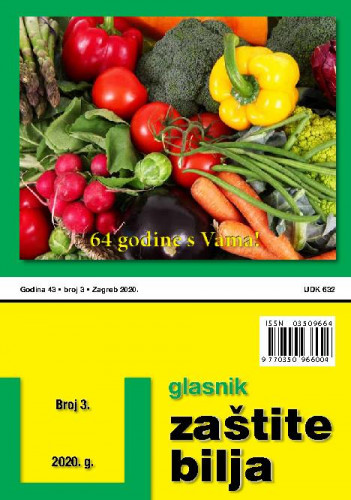The purpose of this research was to determine the effect of commercial pectolytic enzymes on the anthocyanin composition, colour parameters and specific sensory atributes in young wines produced of Croatian autochthonous variety Babić. The maceration without commercial enzymes was compared with two different enzymes: pectinase with additional cellulase and hemicellulase activity (A) and the pectinase with inactive yeast cells (B), during two harvests. Both products had a positive effect on the anthocyanin content and composition, but with different intensities. The influence of enzymes was confirmed through the colour parameters; intensity, hue and the ratio between yellow, red and blue, depending on product. Young wines produced with pectinase enzyme were significantly better, for all parameters. The sensory analysis showed that wines produced with pectinase enzyme (product A) were significantly better than those produced without enzymes. The combination of pectolytic enzymes and inactive yeast cells (product B) had a partial positive effect on the anthocyanins, colour parameters and sensory quality during two harvests. The use of specific commercial pectolytic enzymes can be a good and beneficial technological treatment in production of Babić young wine, based on preliminary research. These data confirmed the need to carry out research prior to use in real production, to select and recommend certain commercial enzyme products, according to the particular grape variety and certain wine properties that want to be improved.; Svrha ovog istraživanja bila je ispitati utjecaj komercijalnih pripravaka pektolitičkih enzima na sastav antocijana, parametre boje i određene senzorne atribute u mladim vinima autohtone sorte Babić. Tijekom dvije berbe, maceracija bez komercijalnih enzima uspoređivana je s dva tretmana s različitim enzimatskim pripravcima; pektinaza sa sekundarnom aktivnošću celulaza u hemicelulaza (A) te pektinaza s inaktivnim stanicama kvasaca (B). Oba proizvoda utjecala su pozitivno na sadržaj i sastav antocijana, ali s različitim intenzitetom. Pozitivan utjecaj enzima očitovan je i kroz parametre boje; intenzitet, nijansu i relativan odnos između žute, crvene i plave boje, ali ovisno o sastavu pripravka. Svi mjereni parametri kakvoće mladih vina proizvedeni maceracijom s pripravkom A bili su bolji u odnosu na kontrolan tretman i djelomično bolji u odnosu na tretman s pripravkom B. Senzorne analize potvrdile su rezultate kemijskih parametara i mlada vina maceracije s pektolitičkim enzimima bila su senzorno značajno bolja. Pripravak kombinacije enzima i inaktivnih stanica kvasaca (B) nije imao ujednačen učinak tijekom dvije berbe, bez obzira na parametar kakvoće. Temeljeno na rezultatima ovog istraživanja, primjena komercijalnih pektolitičkih enzima može biti korisna kao tehnološki postupak osiguranja primarnih čimbenika kakvoće mladih vina sorte Babić. Međutim, ovi rezultati upućuju također i na potrebu istraživanja prije primjene u stvarnoj proizvodnji, radi selekcije i preporuke specifičnih enzimatskih pripravaka, vodeći računa o sorti i svojstvima kakvoće koje je potrebno poboljšati.
Sažetak

 Glasnik zaštite bilja : 43,3(2020) / glavni urednik Katarina Lučić.
Glasnik zaštite bilja : 43,3(2020) / glavni urednik Katarina Lučić.